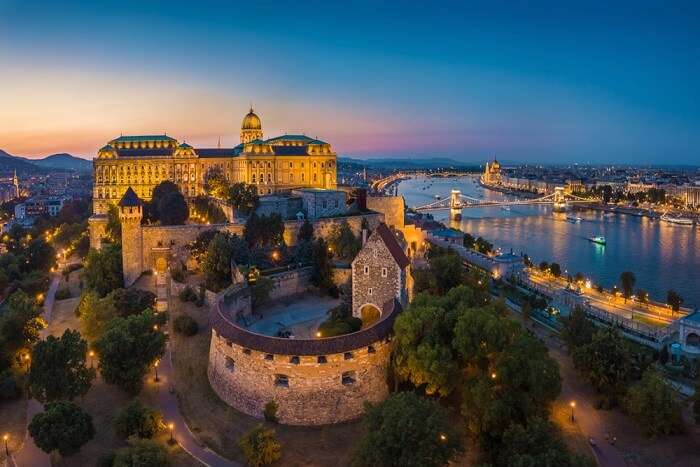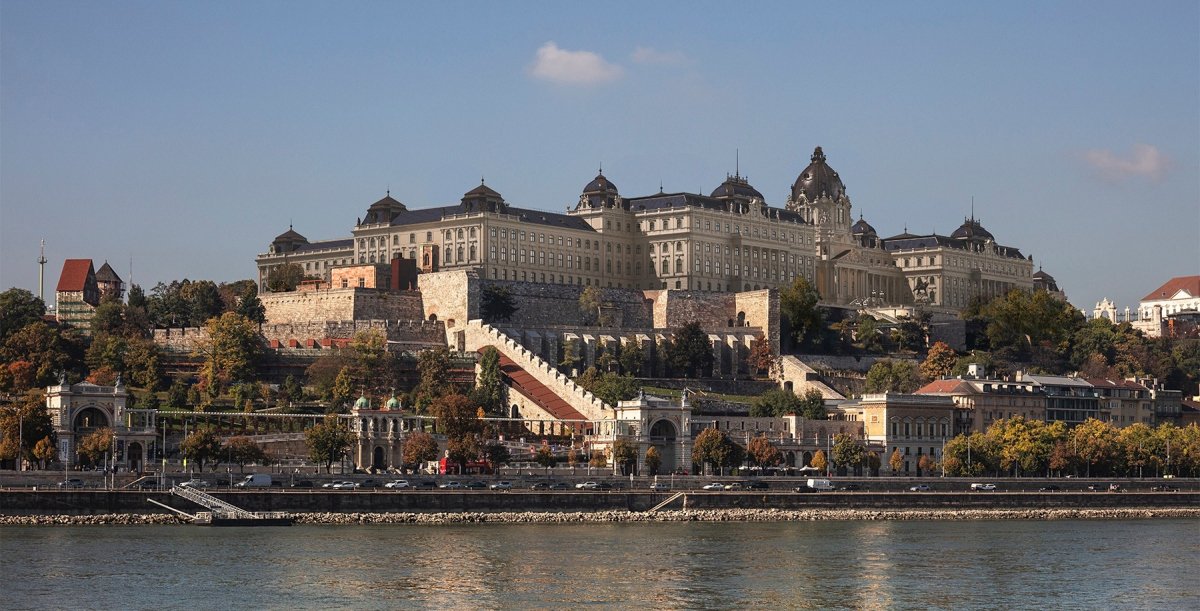Buda Castle, known locally as Budavári Palota, stands as a monumental symbol of Hungary’s rich history and architectural grandeur. Perched on the southern tip of Castle Hill in Budapest, this historic castle and palace complex has been the residence of Hungarian kings since its earliest construction in 1265. The current Baroque palace, which dominates the site today, was built between 1749 and 1769. It suffered extensive damage during the Siege of Budapest in World War II and was subsequently rebuilt in a simplified Baroque style during Hungary’s state communist era.

The castle’s location on Castle Hill is not only strategic but also scenic, offering stunning views of the Danube River and the city of Budapest. The defensive walls surrounding the complex extend to encompass the entire Castle Quarter (Várnegyed), a neighborhood renowned for its medieval, Baroque, and neoclassical architecture. This area is also home to significant government buildings, including Sándor Palace and the Carmelite Monastery of Buda. Together, the neighborhood and the palace are referred to as “the Castle” (Vár) by locals.

Today, Buda Castle is a vibrant cultural hub, housing the Hungarian National Gallery, the Budapest Historical Museum, and the National Széchényi Library. Each of these institutions plays a vital role in preserving and showcasing Hungary’s artistic, historical, and literary heritage.

Castle Hill is easily accessible via the Castle Hill Funicular, which connects it to Clark Ádám Square and the Széchenyi Chain Bridge. The Castle Quarter’s historical significance and architectural beauty were recognized globally when it was designated a UNESCO World Heritage Site in 1987, cementing its status as a must-visit destination in Budapest.

A Glimpse into History
The origins of Buda Castle trace back to the Middle Ages. The first royal residence on Castle Hill was commissioned by King Béla IV of Hungary between 1247 and 1265. This early structure set the foundation for what would become a significant royal seat in European history.

The oldest surviving part of the current palace dates back to the 14th century and was built by Stephen, Duke of Slavonia, the younger brother of King Louis I of Hungary. The Gothic palace of King Louis I, arranged around a narrow courtyard near the castle keep known as Stephen’s Tower, marked the early architectural evolution of the site.

Under the reign of King Sigismund, Buda Castle underwent significant expansion. Sigismund, who was also Holy Roman Emperor, envisioned the castle as a grand Gothic palace, reflecting his status as one of Europe’s most powerful rulers. By the late Middle Ages, Buda Castle had become an important center of the International Gothic style and one of the largest Gothic palaces in Europe.
Today, Buda Castle stands not only as a testament to Hungary’s royal past but also as a symbol of the nation’s resilience and cultural richness.


